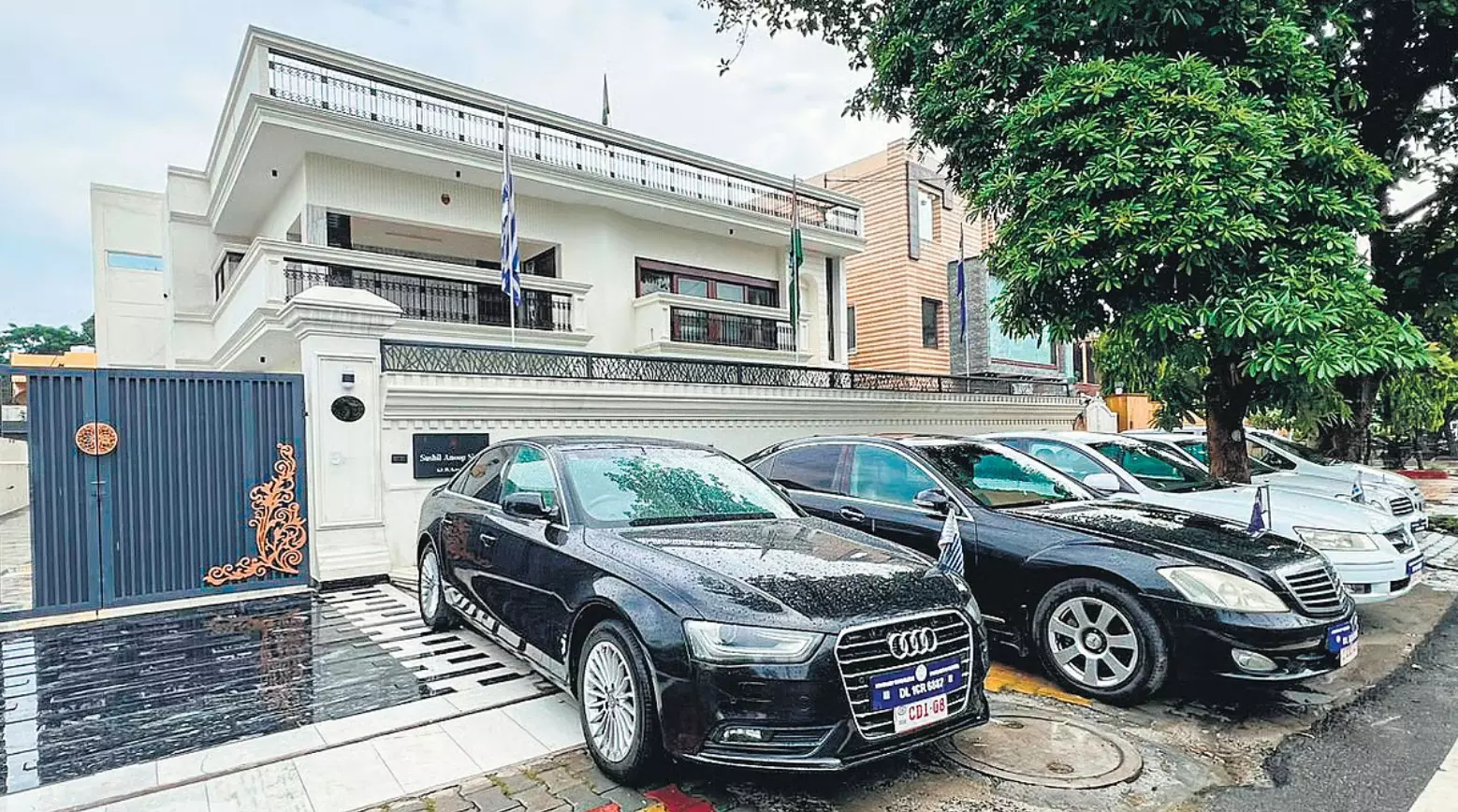Legal Black Hole

The recent unravelling of a bizarre fraud case in Ghaziabad has exposed not just the audacity of one individual but also the glaring loopholes in India’s legal, administrative, and academic response to unconventional threats. Harsh Vardhan Jain, a 47-year-old resident of Ghaziabad, was arrested on July 22 for running what he claimed were embassies of four so-called “micronations” — Westarctica, Seborga, Poulbia, and Ladonia — from a rented house. With forged diplomatic plates, luxury vehicles, and pseudo-official paraphernalia, Jain posed as an ambassador of these fictional states. On the surface, this might seem like the plot of a satire or an elaborate prank. But the investigation has taken darker turns, with the Uttar Pradesh Special Task Force now probing possible overseas job scams, hawala connections, and counterintelligence activities. In the absence of a clear legal precedent, state authorities find themselves in uncharted waters. These self-declared micronations — which imitate the institutions of real nation-states — fall into a legal and conceptual grey zone, challenging the traditional frameworks of both law enforcement and diplomacy.
Micronations are not new. In academic discourse, they are largely considered symbolic or ideological entities. As noted in a 2014 research paper by Philip Hayward titled Islands and Micronationality, these entities lack the formal recognition required to function as sovereign states. They exist more as thought experiments, artistic protests, or digital communities than as political realities. Yet, as this case reveals, they can serve as convenient cloaks for fraudulent activity. Take Westarctica, for example. Founded by a former US Navy officer, it claims sovereignty over a portion of Western Antarctica and even boasts of a Grand Duke and a Cabinet. Seborga, meanwhile, is a picturesque Italian village that promotes itself as a principality with a princess and council. Ladonia, in Sweden, is framed as an artistic republic with thousands of symbolic citizens. These micronations acknowledge their lack of formal recognition and operate, for the most part, as satire, community-building projects, or creative expressions. So how does a man in Ghaziabad transform these fanciful concepts into a tangible scam? By exploiting the limited understanding of such entities in India’s legal and social frameworks, Jain appears to have crafted a narrative of diplomatic legitimacy. His use of forged insignias and diplomatic claims might have helped him gain credibility among unsuspecting victims. The very novelty of the concept — micronations with fake embassies in India — served as both a camouflage and a weapon. The absence of a legal structure to deal with such impersonations makes the case even more complicated. As officials have pointed out, the Ministry of External Affairs typically coordinates with recognised sovereign states through proper channels. But what happens when the “country” in question does not legally exist? There is no legal reciprocity, no diplomatic immunity, and certainly no treaty framework to fall back on.
International law is unambiguous on this point. The Montevideo Convention of 1933 lays down four essential criteria for statehood — a permanent population, defined territory, government, and the capacity to enter into relations with other states. Micronations, by design, fail to meet these conditions. Micronations are not recognised subjects of international law. They remain outside the purview of formal diplomacy and lawmaking. From a national security perspective, this should set off alarms. When fabricated diplomatic status can be used to legitimise activities that may include hawala transactions or intelligence-gathering, the consequences could be far-reaching. Imagine the damage if such a front were used for trafficking, espionage, or money laundering under the guise of sovereignty. More importantly, the Ghaziabad case raises uncomfortable questions for domestic law enforcement and intelligence agencies. How could a man operate such an elaborate facade from the heart of the National Capital Region without raising suspicions? Why were forged diplomatic plates and fake seals not flagged earlier? What due diligence mechanisms are in place to verify claims of foreign representation? This is a textbook case of institutional inertia meeting conceptual novelty. Our laws, geared to deal with recognisable frauds and traditional threats, are ill-equipped to tackle imaginative cons that masquerade as political theatre. Furthermore, the academic and policy community in India has largely overlooked the phenomenon of micronations, dismissing it as fringe or irrelevant. Yet, this ignorance is precisely what allowed the fraud to flourish. Had these micronations been scrutinised in academic circles, their symbolic nature might have been more widely understood. Had law enforcement agencies been trained in emerging non-traditional threats, Jain’s deception might have been short-lived. The Ghaziabad episode is a wakeup call — not just for our police or judiciary, but for our entire approach to how sovereignty, identity, and diplomacy are understood in the 21st century.
India must now initiate two parallel responses. First, the legal framework needs to be updated to categorise and criminalise the misuse of fictitious diplomatic identities. Forging diplomatic credentials of unrecognised entities should carry penalties similar to impersonating officials of legitimate governments. Second, academic institutions and think tanks must start studying the micronation phenomenon, not just as a curiosity but as a potential tool for deception. In a world where identity can be manufactured, where nationhood can be mimicked, and where symbols can be weaponised, the lines between theatre and threat are quickly blurring. The Ghaziabad case may be the first of its kind — it must also be the last of its kind.



